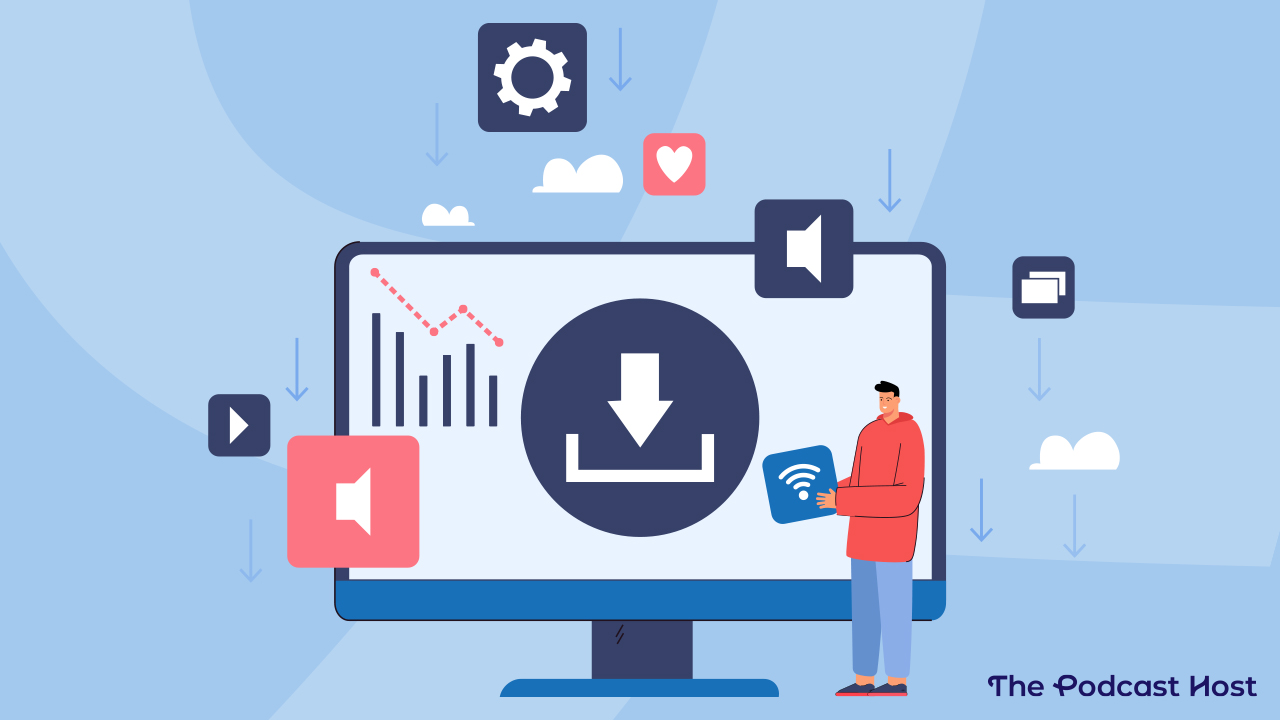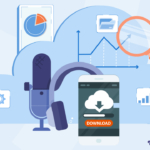Why Your Download Numbers Have Dropped (& What To Do About It)

If you’ve noticed a drop in your podcast download numbers recently, you’re certainly not the only one. A member of our IndiePod community, Paul Cheall, recently told us:
“I noticed the number of downloads I’ve been getting reduced quite substantially in the recent past. And I thought, what’s going on? I thought, this is the end of the world because I saw my stats going down and I didn’t know why.“
Paul Cheall, Fighting Through Podcast
Paul soon learned that the slump in his numbers was due to Apple’s iOS 17 update. Released in September, this update involved a tweak to automatic downloads that’s incrementally had a major impact on many podcasters’ numbers. Some podcasts are now reporting as much as a 40% decline in downloads.
And it’s not just the independent podcasters who have been hit – top publishers have experienced the slump too. Podtrac data reported the top 20 podcasts down 19% between November and December.
But what’s changed, exactly, and should you be worried about your podcast? Let’s examine why you don’t need to lose any sleep over this update and how to prevent changes like this from impacting your listener data moving forward.
How the iOS 17 Update Impacted Downloads
Since the iOS 17 update, Apple Podcasts no longer automatically downloads missed episodes if listeners take a break from a podcast they subscribe to.
Previously, if someone stopped listening to your show for a while, Apple would pause downloads on any new episodes. But when that listener decided to jump back in, the app would start automatically downloading all the episodes you missed.
Depending on how many podcasts you follow, you could have hundreds of episodes downloaded that you’ve never listened to and probably never will. But these unlistened-to podcasts still contribute to your download numbers. As a result, your Apple Podcast metrics are often heavily inflated compared to the listening data you have on other listening apps.
Apple Podcasts is the only platform that supports automatic downloads. And because it’s still the most popular podcast-listening app, any changes like this can have a pretty major impact. Even if they try to play it down like Apple did when promoting the iOS 17 release.
As a creator, it’s hard not to be disheartened when you see a drop in your download numbers. But in the long term, this change marks a positive change for the industry.
Why This Change is Good for the Industry
Most industry folks agree that this change to podcast measurement will be good for us all in the long term.
Guy Scott-Wilson, Head of Content at Acast, recently said the update “marks an important moment of maturity for the industry.” We’re shifting towards a more standardised form of podcast measurement, and standardisation means better, more reliable metrics for creators and advertisers.
It’s worth noting that this is coming from Acast, who saw a 12% drop in listens as a result of Apple’s update. A drop that cost them a potential $7.2 million in advertising contracts. If Acast is able to see the positives here, that’s saying something.
The IAB (Interactive Advertising Bureau) has also just announced an updated version of its technical guidelines which supports the change.
The IAB’s guidelines aim to standardise how we measure podcast downloads, listens, and audience engagement. When measurement is standardised, this makes the data more transparent and reliable for advertisers.
“The primary objective of the Podcast Technical Measurement Guidelines v2.2 is to address the challenges faced in measuring downloads of the podcast audio file,” they said.
Audio accounts for 31% of media consumption, but only 9% of ad spend. Making podcast data more standardised and transparent should help the medium reach its full potential in advertising.
The IAB are looking for feedback on the guidelines from podcast creators and industry people. You can submit your feedback on this IAB page before 23 March 2024.
Still, you might be wondering about the impact on your own show, and what you can do about it.
Control Your Own Podcast Narrative
If there’s one lesson we’ve learned from the iOS 17 update, it’s that the industry relies too heavily on Apple Podcast data—and episode download numbers—to measure success.
Sure, Apple Podcasts is still the most popular listening app, but other platforms like Spotify and YouTube still matter just as much if your audience uses them. If you’re dealing with a drop in your download numbers right now, have a look at non-Apple platforms. It’s likely you won’t see much of a drop (if any) there.
There’s also something to be said more generally about advertisers using download numbers as a primary metric when looking to partner with podcasts. There are better ways to measure the success of a podcast and this isn’t the first time the download metric’s been called into question.
This is why it’s so important to take control of your own podcast data. What metrics indicate success for your podcast?
Creating your own podcast media kit that has consistent, up-to-date stats taken from a cross-section of your most popular platforms is going to be a much more reliable way to demonstrate success to advertisers.
Track your data across all your primary listening platforms. Look not just at download numbers but also things like episode completion rate, listener time and subscription numbers. Together, these numbers will build a much clearer impression of how your audience listens.
And if you want to show advertisers some real, tangible data on how listeners engage with your show, include case study data in your media kit too. For example, you could run a series of dynamic ads and track how many clicks they get, presenting this as a percentage of total listeners.
Podcast Measurement Is All About Context
One of the reasons podcasts are so attractive to brands is that the size of your audience – including your download numbers – doesn’t really matter. A smaller but highly engaged audience will bring advertisers much better results than a show that has a huge number of downloads that are hardly listened to. In practice, it’s all about context.
No one knows your podcast’s performance indicators better than you do. It’s just a matter of working out what they are and presenting them in a way that’s clear and attractive to brands.
Have you noticed a change in your download numbers recently? If so, how severe was the drop? Join the discussion over in the Indiepod community.

